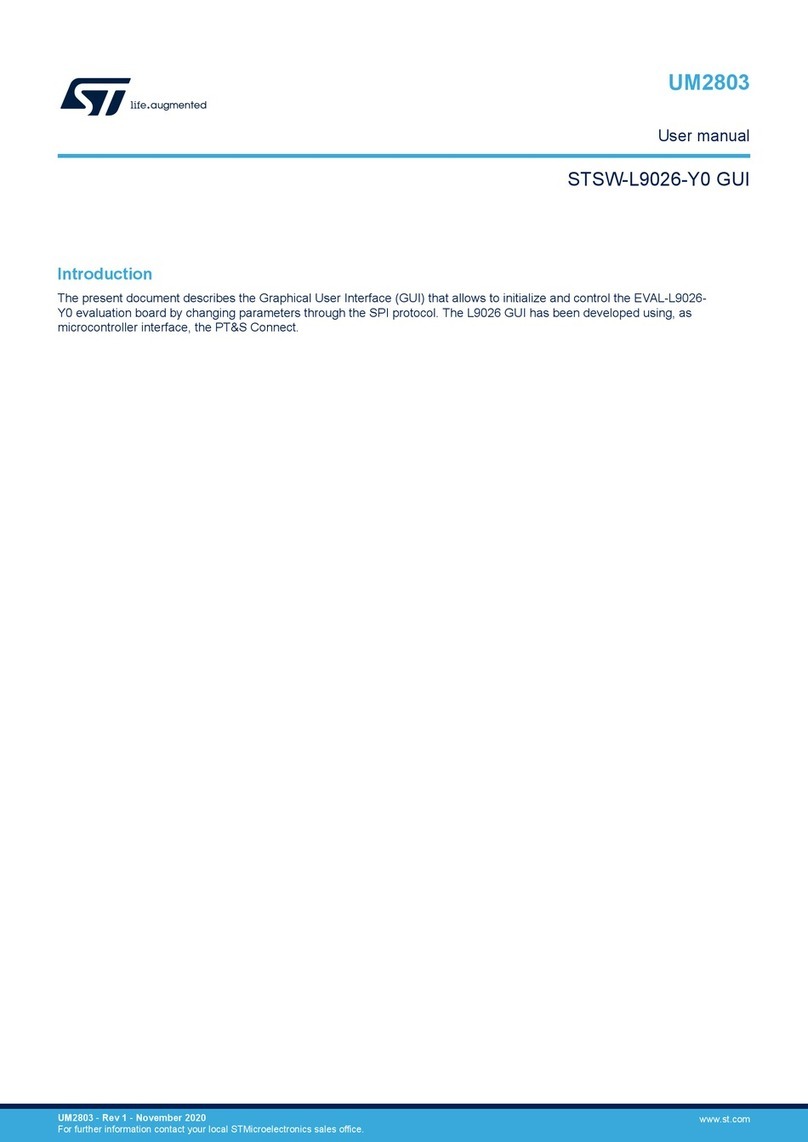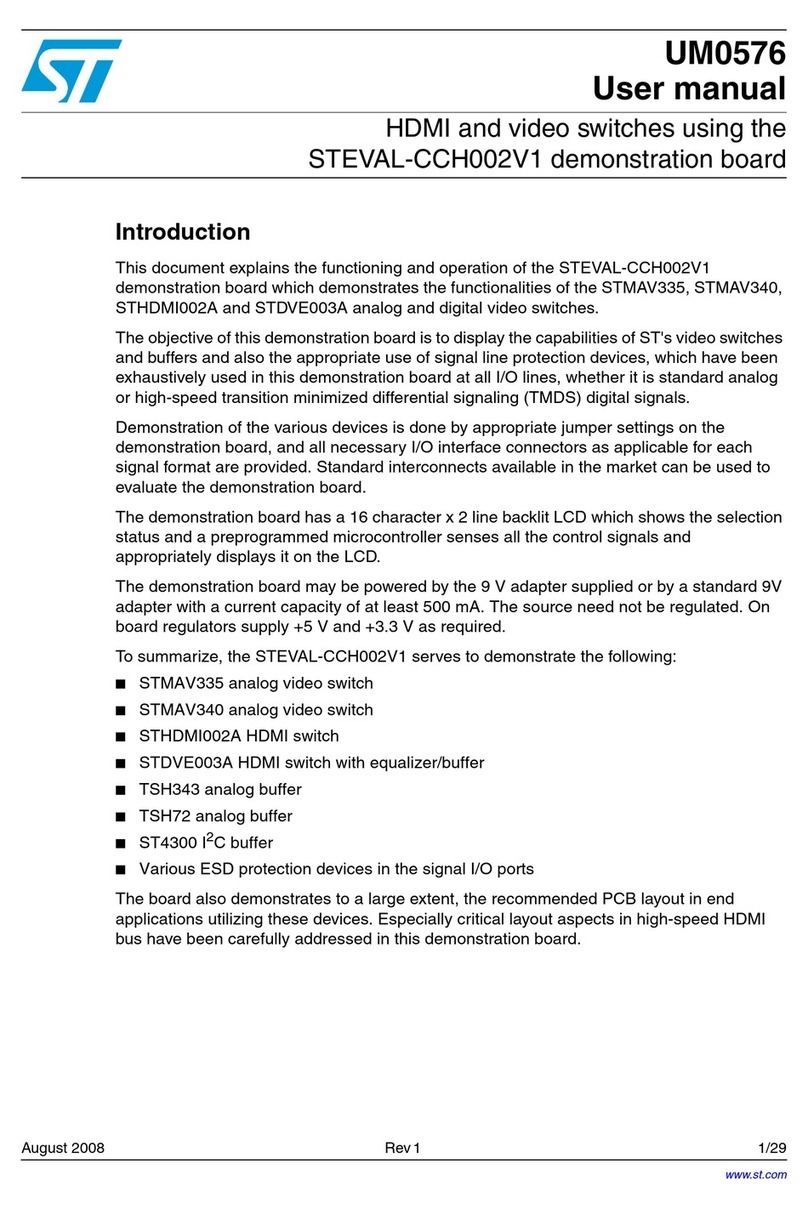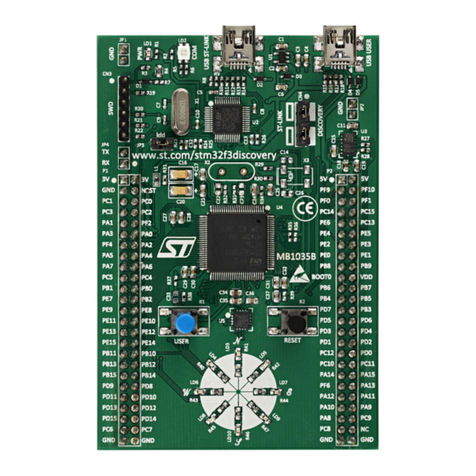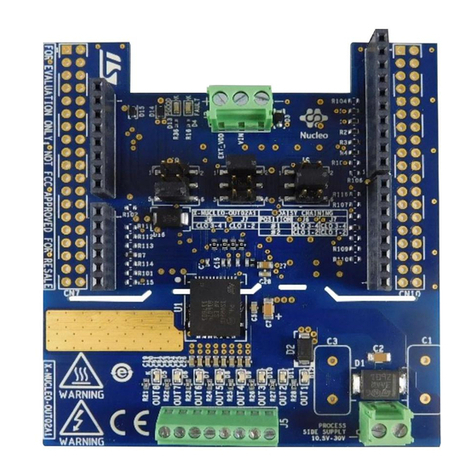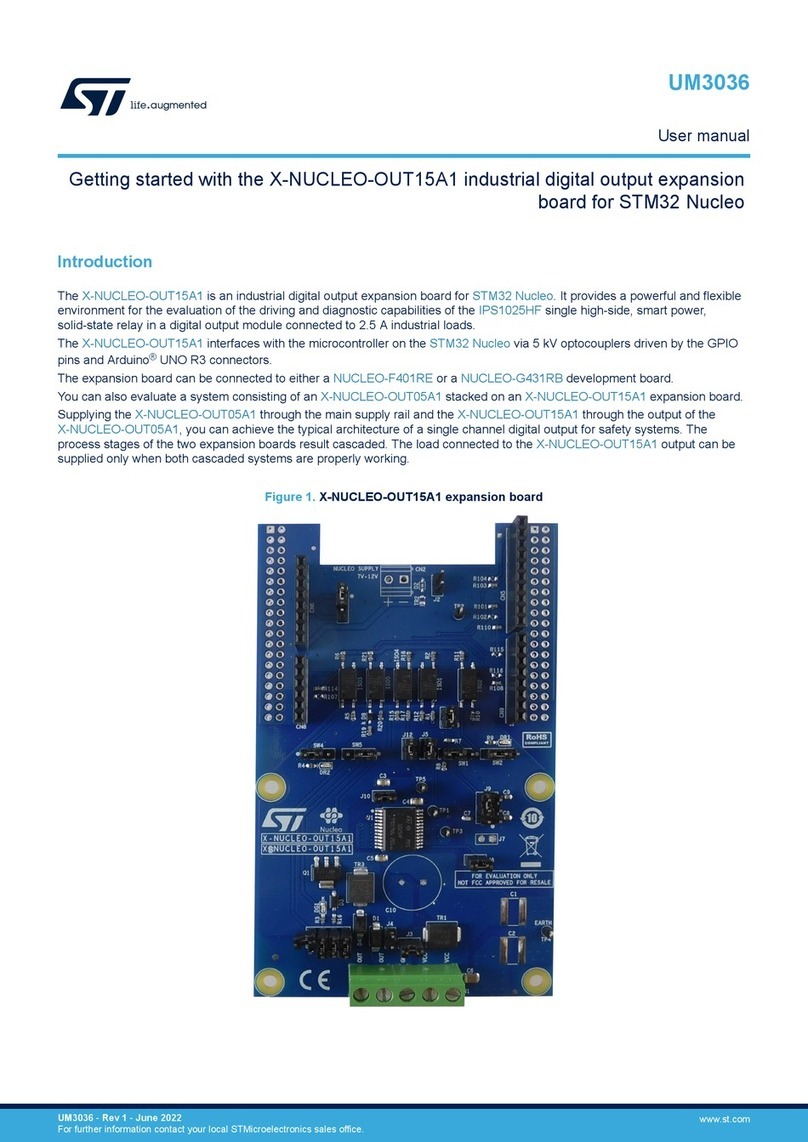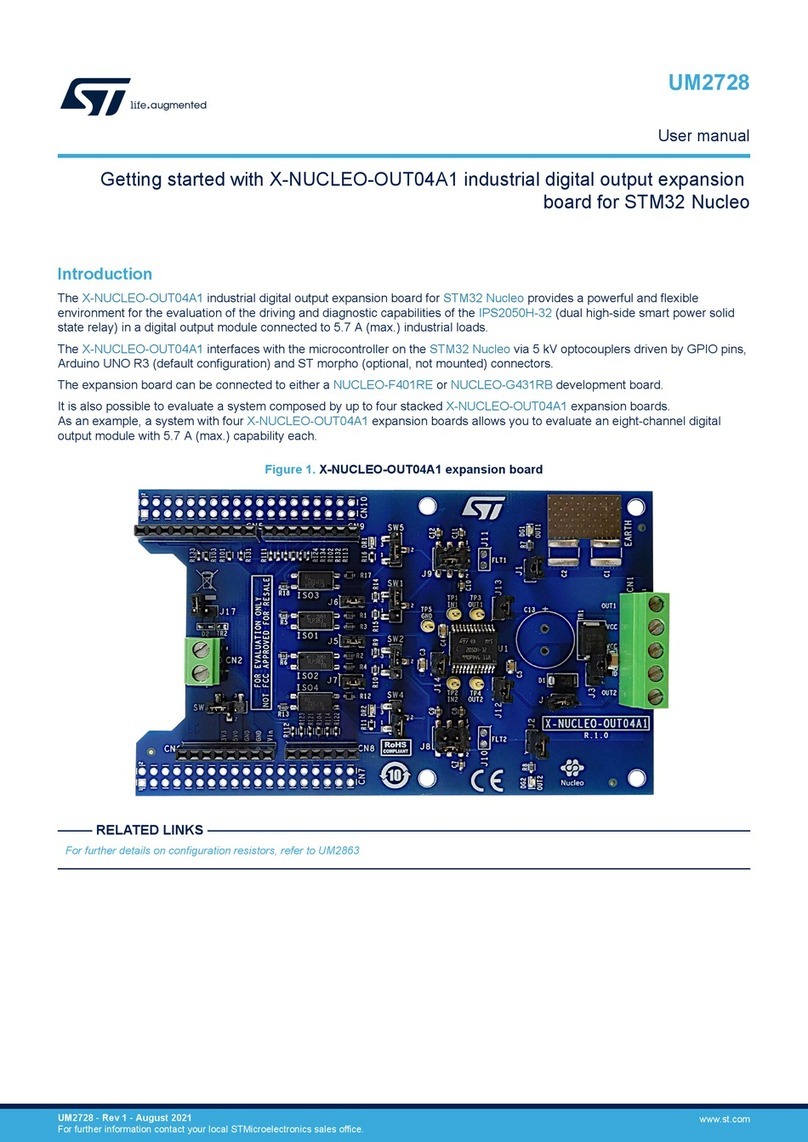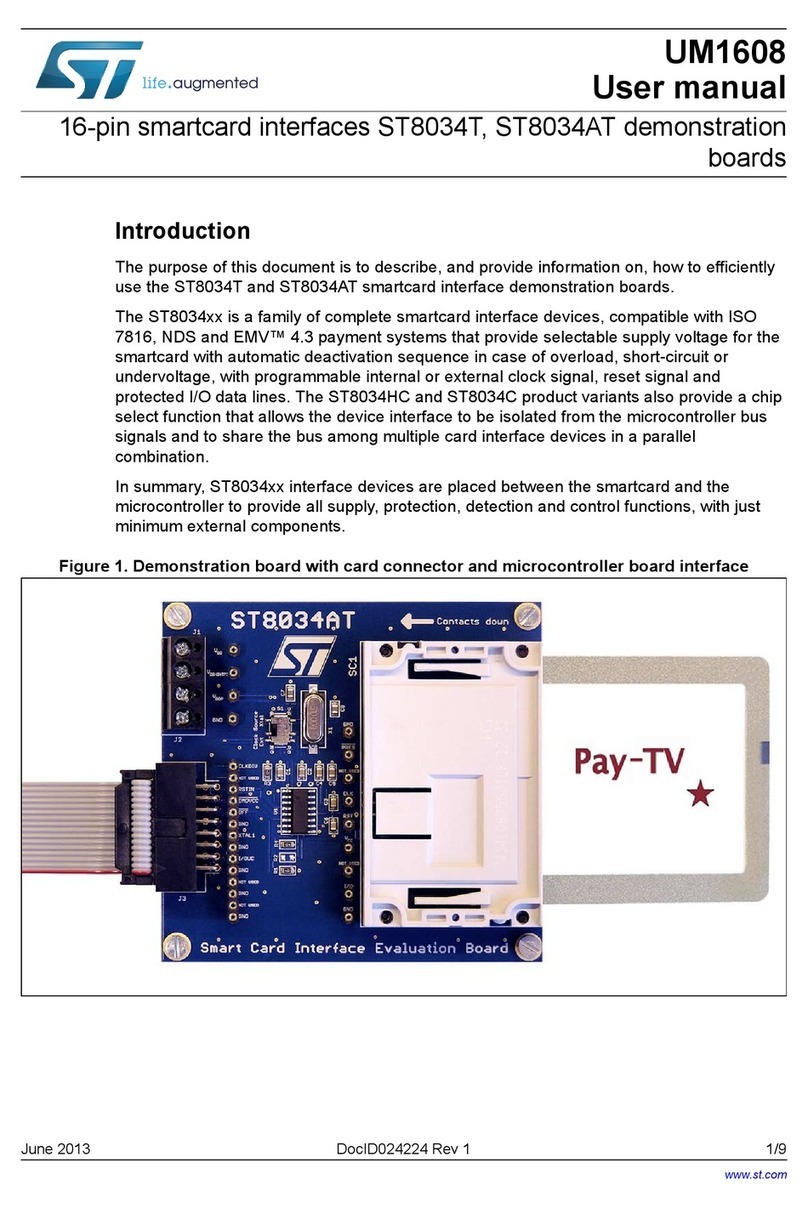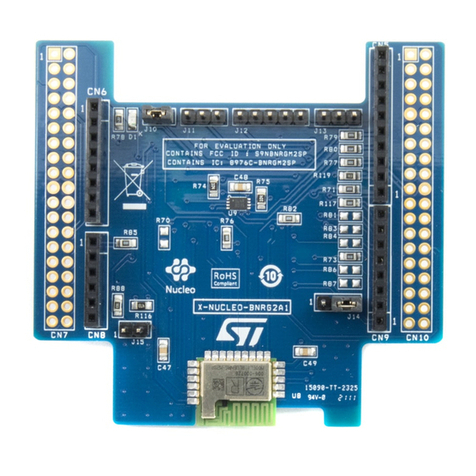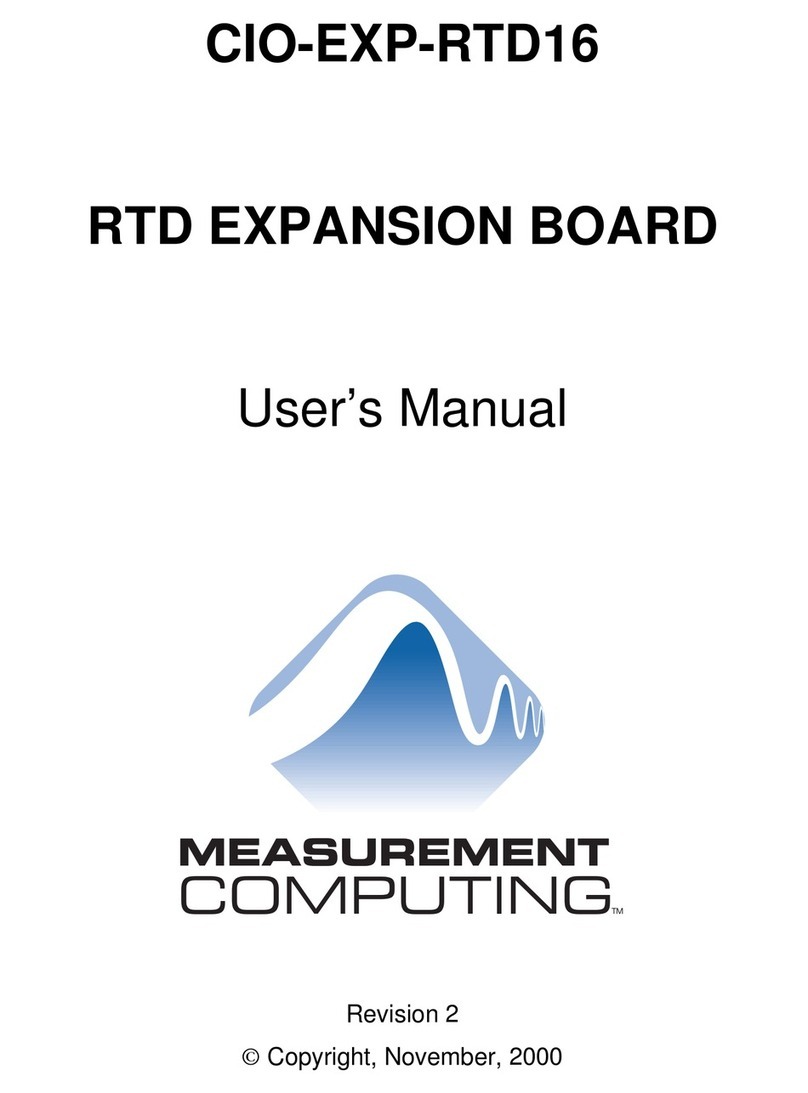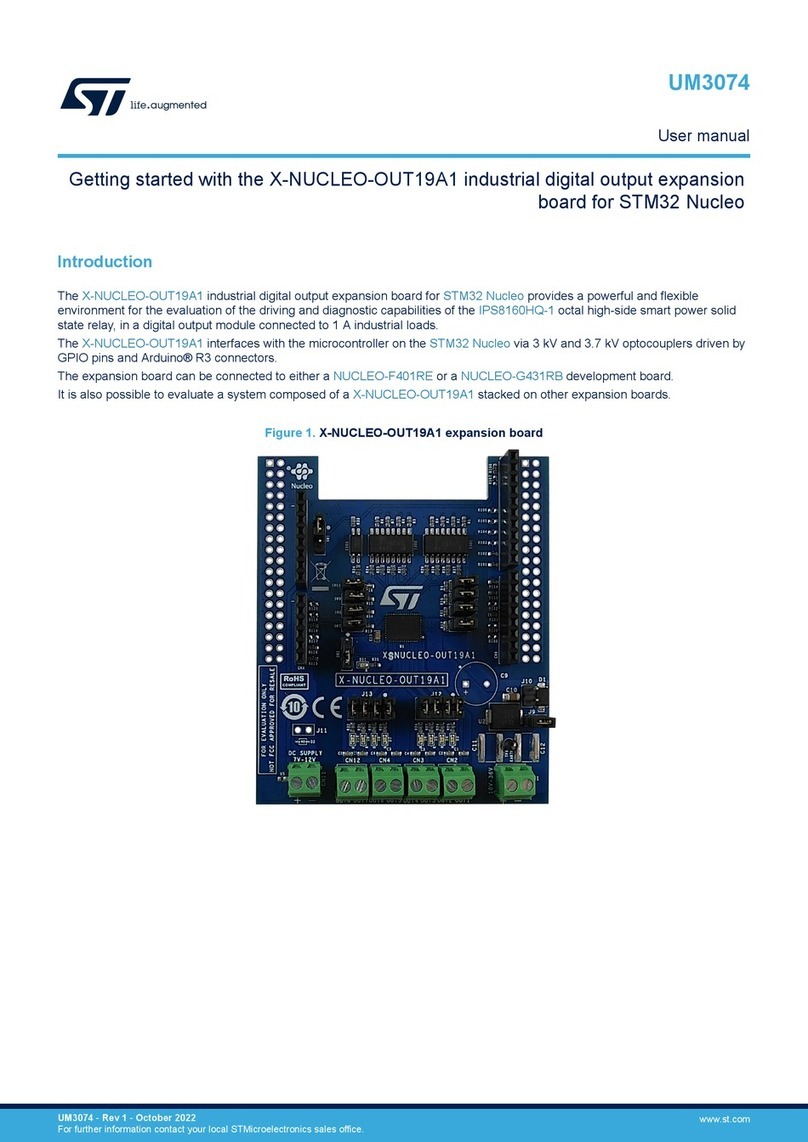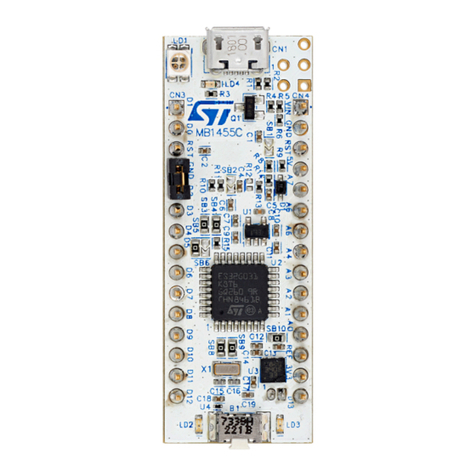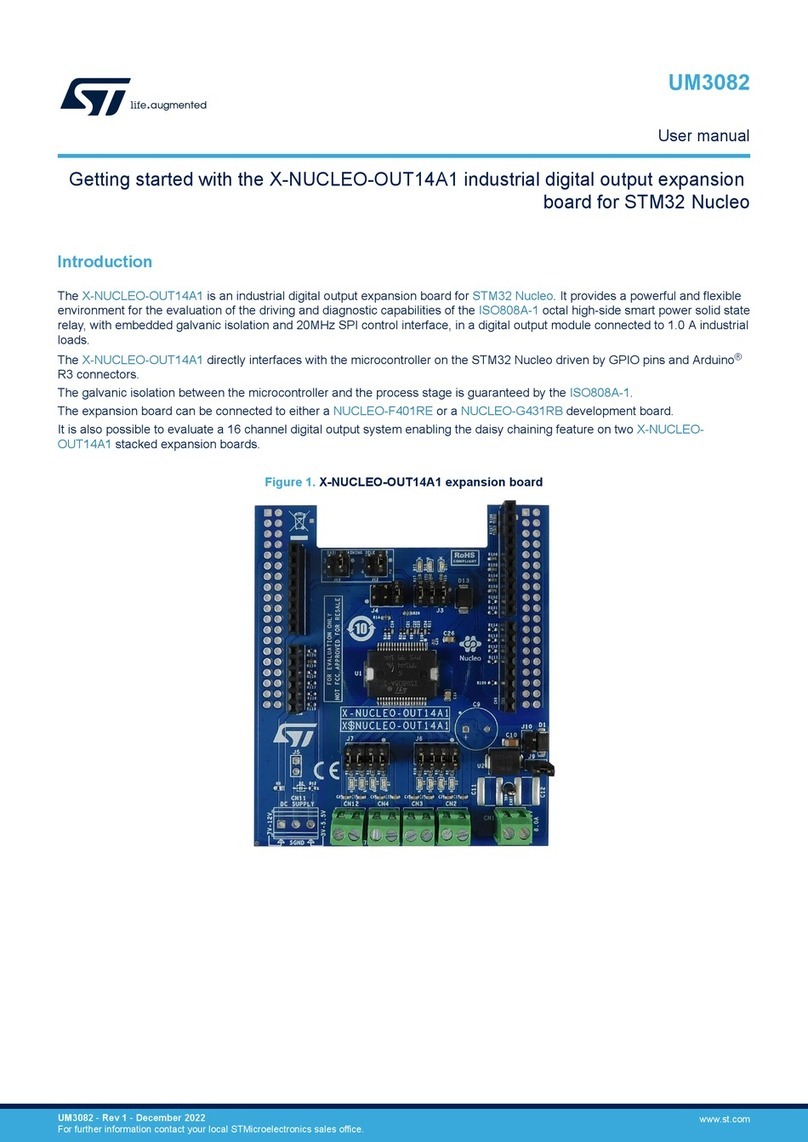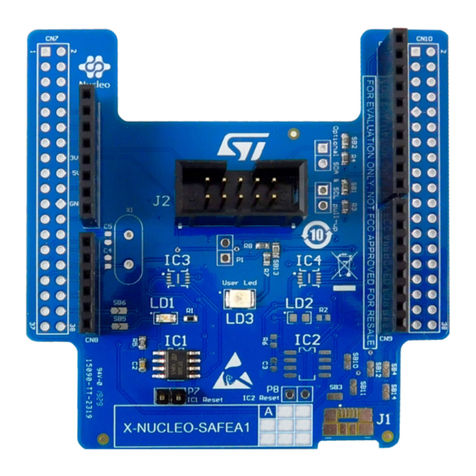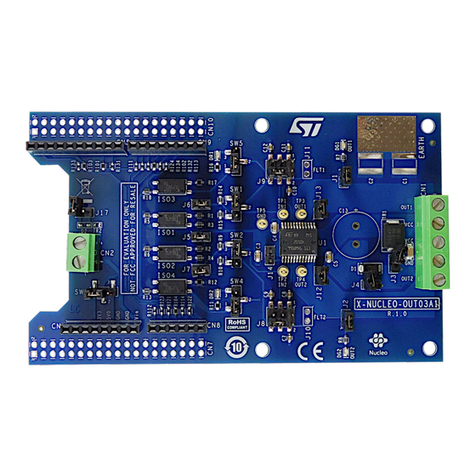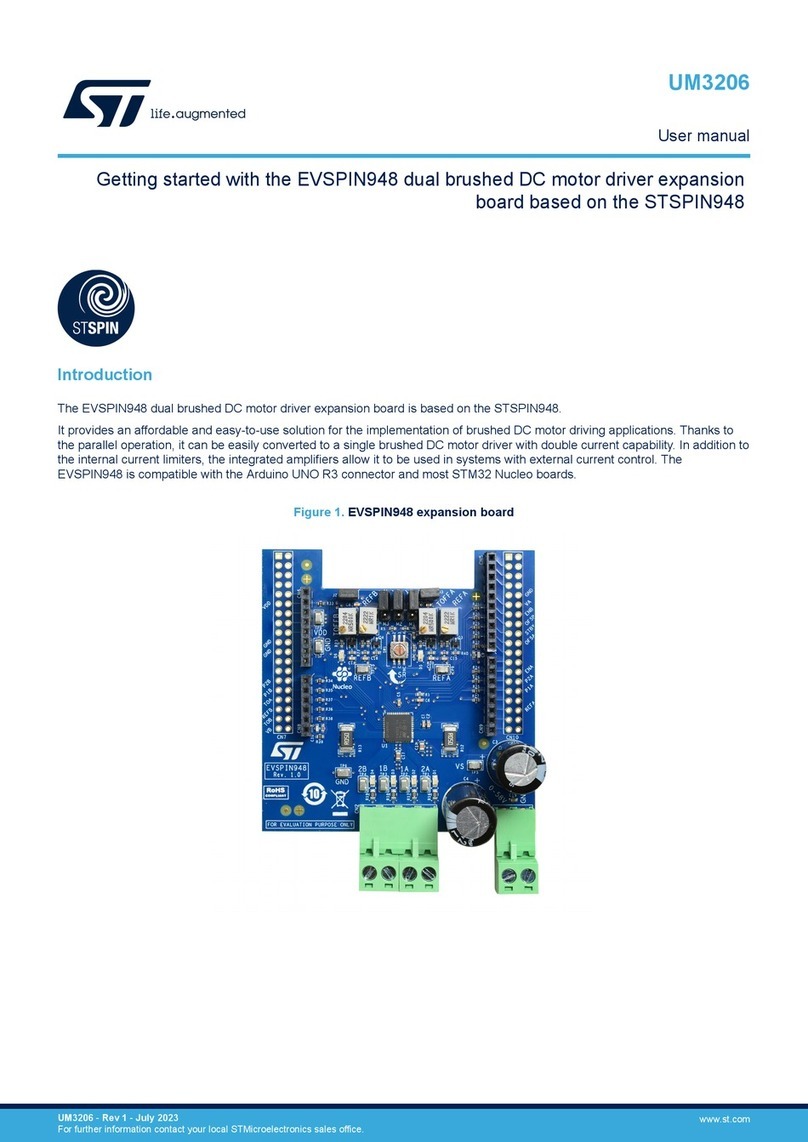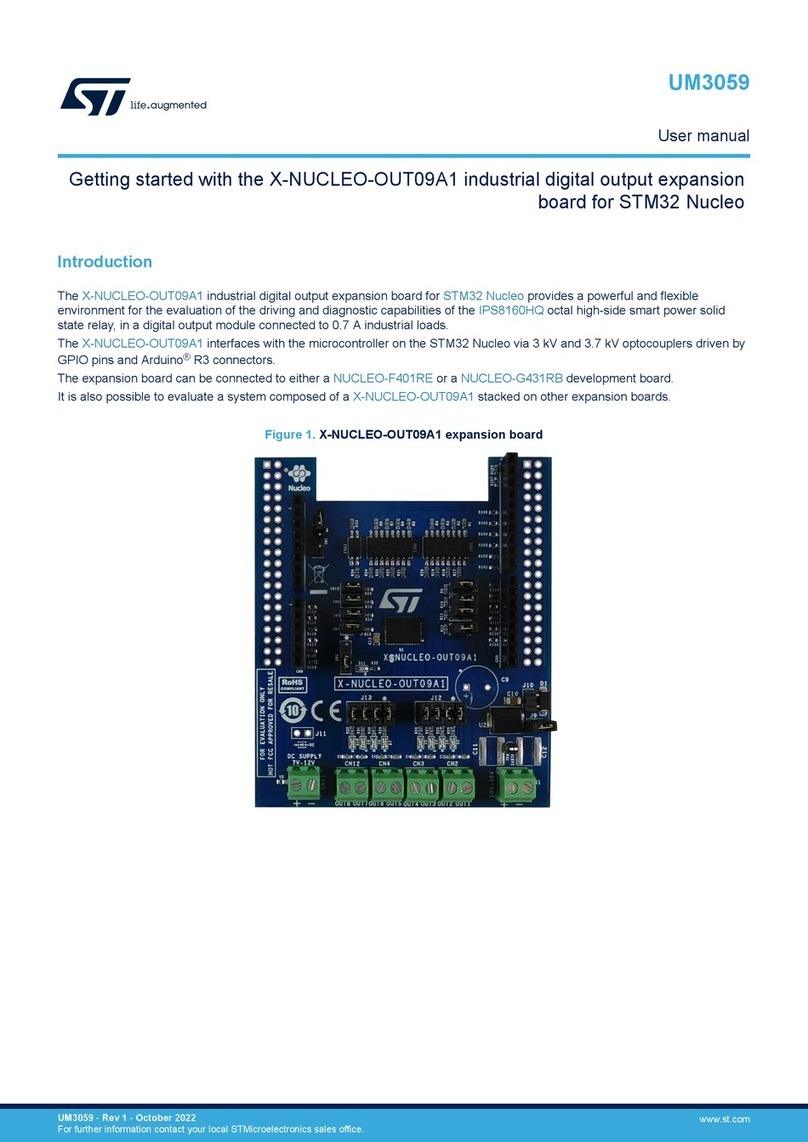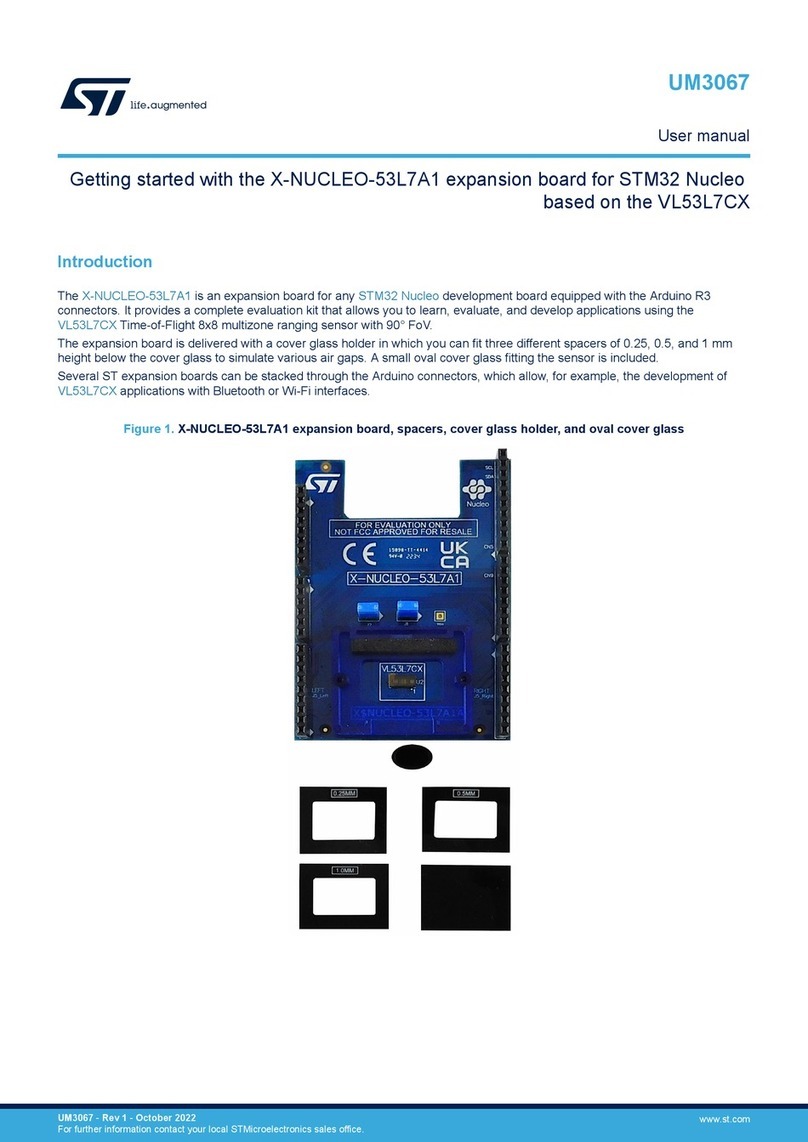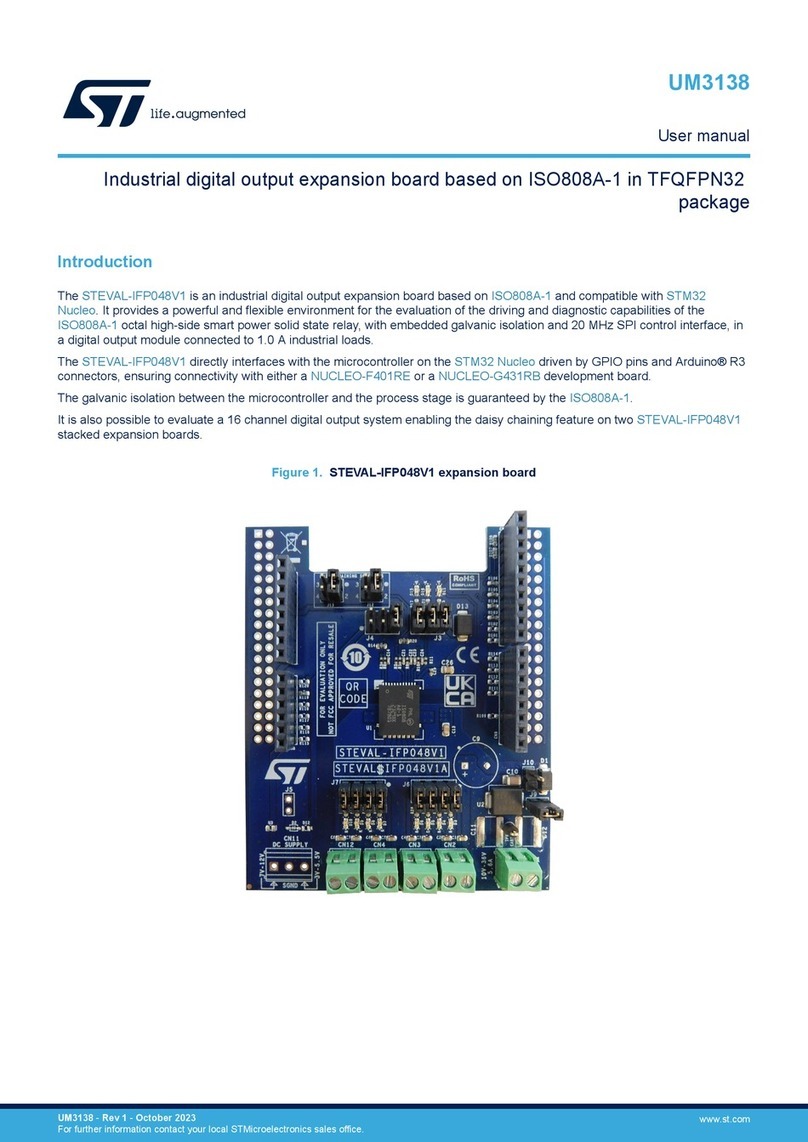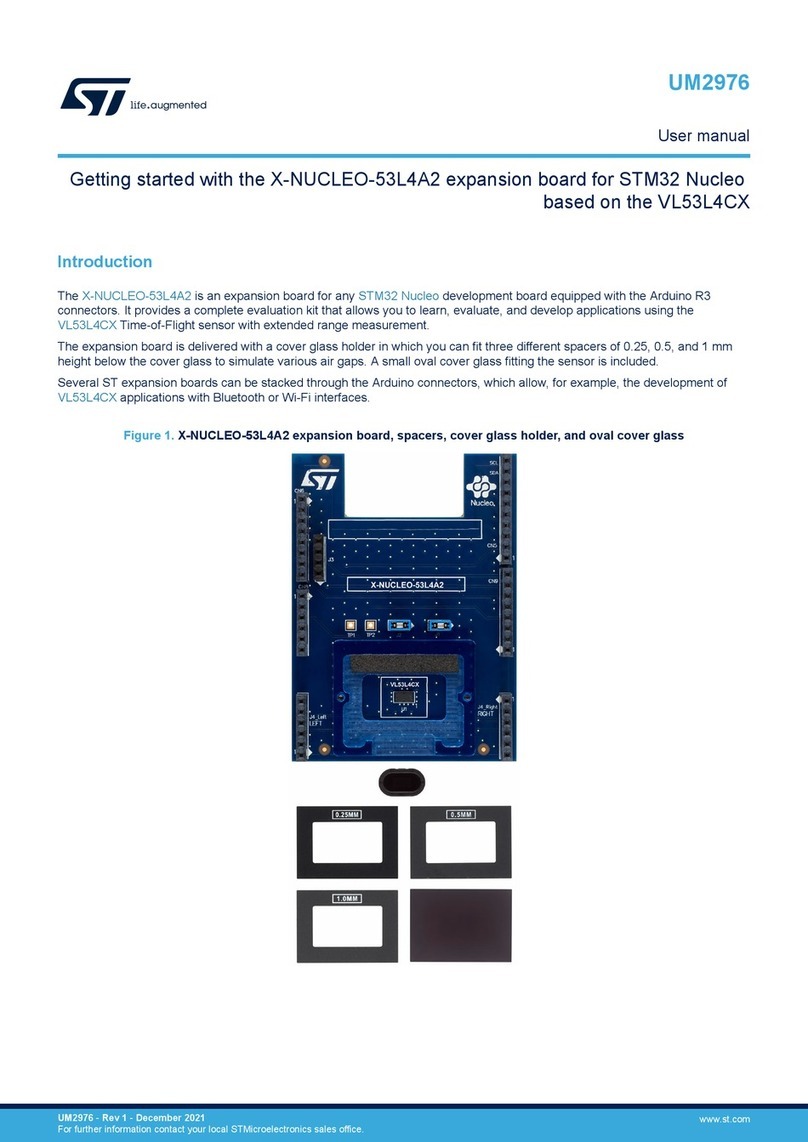
Contents UM2365
2/22 UM2365 Rev 3
Contents
1 Features . . . . . . . . . . . . . . . . . . . . . . . . . . . . . . . . . . . . . . . . . . . . . . . . . . . 6
2 Ordering information . . . . . . . . . . . . . . . . . . . . . . . . . . . . . . . . . . . . . . . . 7
3 Development environment . . . . . . . . . . . . . . . . . . . . . . . . . . . . . . . . . . . . 8
3.1 System requirements . . . . . . . . . . . . . . . . . . . . . . . . . . . . . . . . . . . . . . . . . 8
3.2 Development toolchains . . . . . . . . . . . . . . . . . . . . . . . . . . . . . . . . . . . . . . . 8
4 Conventions . . . . . . . . . . . . . . . . . . . . . . . . . . . . . . . . . . . . . . . . . . . . . . . . 9
5 Hardware layout and configuration . . . . . . . . . . . . . . . . . . . . . . . . . . . . 10
5.1 Board layouts . . . . . . . . . . . . . . . . . . . . . . . . . . . . . . . . . . . . . . . . . . . . . . 10
5.2 Cellular STMod+ expansion board . . . . . . . . . . . . . . . . . . . . . . . . . . . . . . .11
5.2.1 Modem power supply and reset . . . . . . . . . . . . . . . . . . . . . . . . . . . . . . . 12
5.2.2 SIM selection . . . . . . . . . . . . . . . . . . . . . . . . . . . . . . . . . . . . . . . . . . . . . 12
5.2.3 Modem firmware update. . . . . . . . . . . . . . . . . . . . . . . . . . . . . . . . . . . . . 12
5.3 Embedded ST_LINK/V2-1 . . . . . . . . . . . . . . . . . . . . . . . . . . . . . . . . . . . . 13
5.3.1 Drivers . . . . . . . . . . . . . . . . . . . . . . . . . . . . . . . . . . . . . . . . . . . . . . . . . . 13
5.4 Main board power supply . . . . . . . . . . . . . . . . . . . . . . . . . . . . . . . . . . . . . 13
5.4.1 Power supply sources . . . . . . . . . . . . . . . . . . . . . . . . . . . . . . . . . . . . . . 13
5.5 Main board reset sources . . . . . . . . . . . . . . . . . . . . . . . . . . . . . . . . . . . . . 14
5.6 Main board boot options . . . . . . . . . . . . . . . . . . . . . . . . . . . . . . . . . . . . . . 14
6 P-L496G-CELL02 troubleshooting . . . . . . . . . . . . . . . . . . . . . . . . . . . . . 16
7 P-L496G-CELL02 product information . . . . . . . . . . . . . . . . . . . . . . . . . 17
7.1 Product marking . . . . . . . . . . . . . . . . . . . . . . . . . . . . . . . . . . . . . . . . . . . . 17
7.2 P-L496G-CELL02 product history . . . . . . . . . . . . . . . . . . . . . . . . . . . . . . 18
7.3 Board revision history . . . . . . . . . . . . . . . . . . . . . . . . . . . . . . . . . . . . . . . . 18
8 Federal Communications Commission (FCC)
and ISED Canada (IC) Compliance Statements . . . . . . . . . . . . . . . . . . 19
8.1 FCC Compliance Statement . . . . . . . . . . . . . . . . . . . . . . . . . . . . . . . . . . . 19
8.2 ISED Compliance Statement . . . . . . . . . . . . . . . . . . . . . . . . . . . . . . . . . . 20
